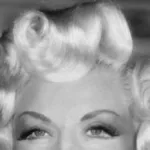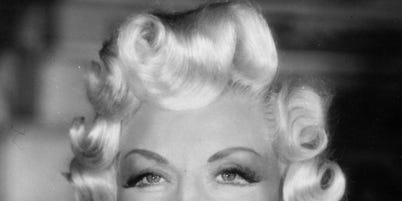Let’s delve into the fascinating world of British history and explore the intricate relationship between two iconic figures: Queen Elizabeth Ii and Margaret Thatcher. Both women held immense power and influence, shaping the course of Britain during their respective reigns and terms as Prime Minister. While they shared a common ground As Formidable Female Leaders, their personalities and approaches to governance Differed Significantly, leading to a complex dynamic marked by both professional formality and reported tension.
Their weekly meetings, known as Audiences, were often described as stiff and unproductive. The Queen and Margaret Thatcher, with their contrasting styles, found it challenging to bridge the Gap Between Their Perspectives. While the Queen was known for her reserved demeanor and diplomatic approach, Thatcher was a bold and assertive Leader Who wasn’T Afraid To Challenge Conventions. This clash of personalities undoubtedly contributed to the perception that their interactions were often strained.
Despite these reported challenges, they served simultaneously for over a decade, navigating complex political issues and concerns within the Commonwealth. This period witnessed significant changes in British society and on the global stage, requiring both leaders to adapt and find common ground to address pressing matters.
Power Dynamics and Formality
The relationship between Queen Elizabeth and Margaret Thatcher was inherently complex due to the inherent power dynamics at play. The Queen, as Head of State, held a position of symbolic authority and constitutional neutrality, while Thatcher wielded political power as Prime Minister. This dynamic created a delicate balance where both women had to navigate their roles with careful consideration.
Formality was paramount in their interactions. Audiences, the weekly meetings between the monarch and her Prime Minister, were steeped in tradition and protocol. These encounters were characterized by decorum and restraint, reflecting the hierarchical nature of British society. While they undoubtedly discussed matters of state, the Queen’s role as a constitutional monarch meant she could not directly influence policy decisions. This separation of powers added another Layer To Their Complex Relationship.
 Mae West Childhood: Early Life & Rise to Fame
Mae West Childhood: Early Life & Rise to FameDespite the formality, there is evidence that Thatcher sometimes found it difficult to fully adapt to the traditions surrounding the monarchy. Her direct and assertive style contrasted with the more reserved manner expected in these formal settings. This clash of personalities likely contributed to the perception that their meetings were often strained.
Weekly Audiences: A Tense Dynamic
The weekly Audiences between Queen Elizabeth and Margaret Thatcher were highly anticipated events, shrouded in an aura of both formality and intrigue. These private meetings provided a platform for the monarch and her Prime Minister to discuss matters of state, offering a glimpse into the inner workings of British power dynamics. However, accounts from those privy to these encounters often described a tense atmosphere.
Thatcher, known for her assertive and sometimes Blunt Style, reportedly found herself struggling to navigate the formality and reserved nature of These Meetings. Sources suggest she was prone to Nervousness During These Encounters, further adding to the perceived tension. The Queen, on the other hand, maintained a composed demeanor, adhering to the protocol and tradition Surrounding These Audiences.
Despite the reported stiffness, it’s important to remember that these weekly meetings were vital for communication between the two most powerful figures in Britain. They provided a space for the exchange of information, perspectives, and even subtle influence, shaping the political landscape of the nation.
Contrasting Personalities and Political Styles
The relationship between Queen Elizabeth and Margaret Thatcher was further complicated by their starkly contrasting personalities and political styles. The Queen, known for her quiet dignity and Reserved Demeanor, embodied a sense of tradition and continuity. Her approach to leadership was characterized by diplomacy, discretion, and a steadfast commitment to constitutional principles.
Thatcher, on the other hand, was a force of nature in British politics. She was bold, assertive, and unapologetically ambitious. Her “Iron Lady” persona reflected her unwavering conviction and Willingness To Challenge Convention. Her policies, Often Characterized As right-wing and market-oriented, were a departure from the more moderate approach typically associated with British leadership. This fundamental difference in worldview undoubtedly contributed to the complexities of their relationship.
Their contrasting styles extended beyond their Political Platforms. The Queen’s world was one of formality, tradition, and subtle influence, while Thatcher thrived on direct action, decisive decision-making, and a more confrontational approach. These differences in temperament and approach Inevitably Created Friction, making it challenging for them to find common ground despite their shared position as powerful women shaping British history.
Navigating Shared Responsibilities
Despite their differences, Queen Elizabeth and Margaret Thatcher, found themselves navigating shared responsibilities during a period of significant change for Britain. Their terms overlapped for over a decade, witnessing major political and social events both domestically and internationally. The Queen, as Head of State, remained a symbol of national unity and continuity, while Thatcher’s role as Prime Minister demanded decisive action and leadership in addressing pressing issues.
They collaborated on matters concerning the Commonwealth, a network of former British colonies that held immense symbolic and strategic importance. The Queen’s global presence and diplomatic influence complemented Thatcher’S Political Acumen, allowing them to present a united front on the international stage. They also worked together during times of national crisis, demonstrating a shared commitment to the well-being of their nation. This period saw both cooperation and tension as they sought to balance their individual roles within a complex Power Dynamic.
Ultimately, their shared responsibilities required a degree of mutual respect and understanding, even amidst their contrasting personalities and Political Ideologies. They navigated these challenges with professionalism, ensuring that the stability of the British state remained paramount.
Beyond the Conflict: The Queen’s Gesture
While their relationship was often characterized by tension and reported disagreements, a notable gesture from the Queen after Thatcher’s resignation in 1990 hinted at a deeper level of understanding. The Queen extended an invitation to Thatcher to join her at a Horse Racing Event, a seemingly small act that spoke volumes about her willingness to extend Kindness Despite Their Reported Conflicts.
This invitation demonstrated a recognition of Thatcher’s significant contributions to British politics and perhaps a desire to bridge the gap between them. It suggested that beneath the surface of political differences, there was a level of respect and even empathy present. While the full extent of their Personal Relationship Remains Largely Private, this gesture offered a glimpse into a more nuanced dynamic than often portrayed in public accounts.
It served as a reminder that Even Amidst Political Divides, individuals can find common ground and extend gestures of goodwill. This act of reconciliation from the Queen showcased her ability to rise above personal differences and acknowledge the complexities of their shared history.










